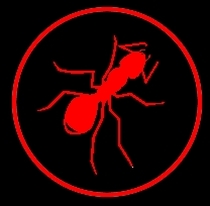Hummingbird
Colibri sp.
Where is it found?
Grassland, forests and urban areas in the New World.
Diet and foraging method
Key adaptations
Long, thin bill for reaching nectar deep within the flower.
Small, specialised wings that can beat really fast allow hummingbird to hover while they are feeding.
Small, specialised wings that can beat really fast allow hummingbird to hover while they are feeding.
Social organisation and mating system
Solitary
Form socially monogamous pairs for breeding
Did you know that...?
Hummingbirds can fly at record breaking speeds. For example, Green Violetear hummingbirds can reach speeds up to 90mph!
Taxonomy
Sources:
Maps from: http://species.mol.org/species/
"Colibri-thalassinus-001-edit" by Mdf. Licensed under CC BY-SA 3.0 via Wikimedia Commons - https://commons.wikimedia.org/wiki/File:Colibri-thalassinus-001-edit.jpg#/media/File:Colibri-thalassinus-001-edit.jpg
"Rufous-tailed Hummingbird 1" by Kathy & sam - Flickr: Rufous-tailed Hummingbird. Licensed under CC BY 2.0 via Wikimedia Commons - https://commons.wikimedia.org/wiki/File:Rufous-tailed_Hummingbird_1.jpg#/media/File:Rufous-tailed_Hummingbird_1.jpg
"Colibri-thalassinus-001-edit" by Mdf. Licensed under CC BY-SA 3.0 via Wikimedia Commons - https://commons.wikimedia.org/wiki/File:Colibri-thalassinus-001-edit.jpg#/media/File:Colibri-thalassinus-001-edit.jpg
"Rufous-tailed Hummingbird 1" by Kathy & sam - Flickr: Rufous-tailed Hummingbird. Licensed under CC BY 2.0 via Wikimedia Commons - https://commons.wikimedia.org/wiki/File:Rufous-tailed_Hummingbird_1.jpg#/media/File:Rufous-tailed_Hummingbird_1.jpg












